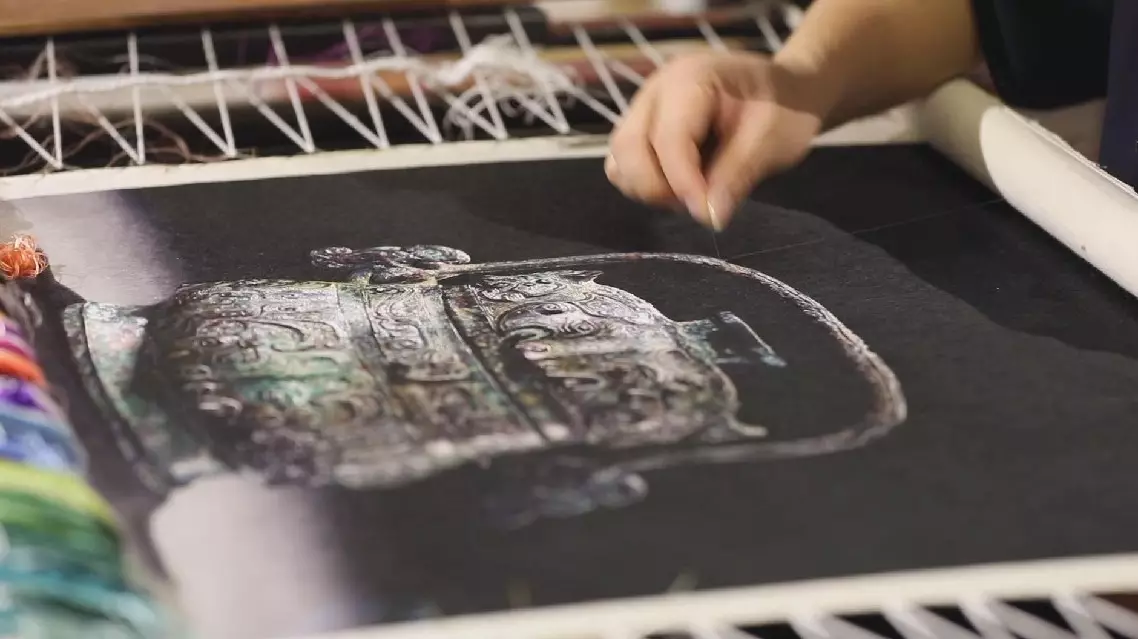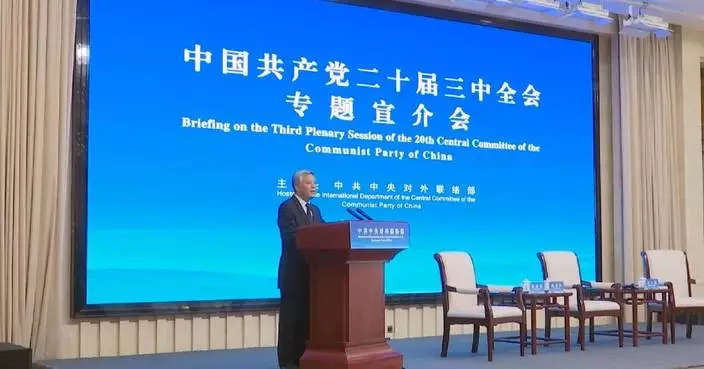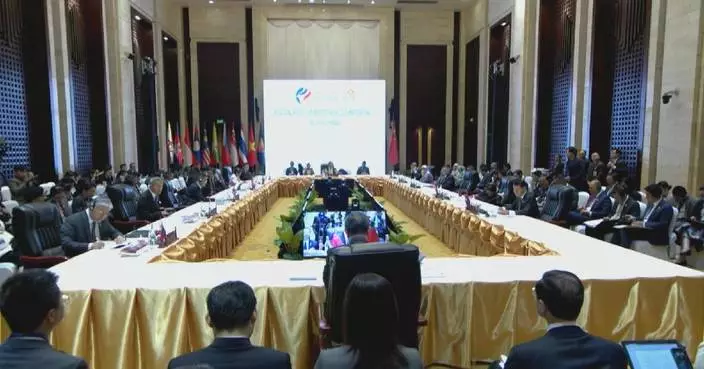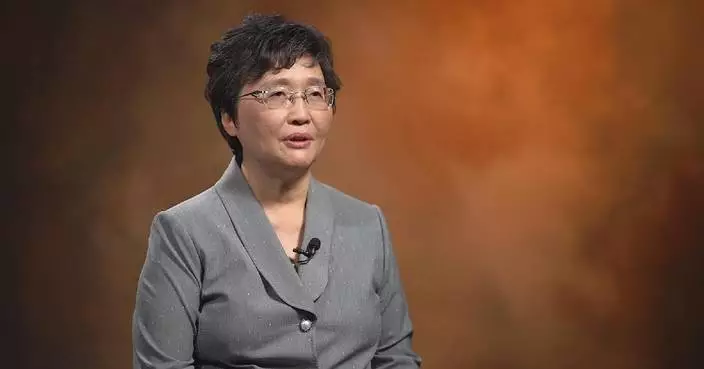For over two decades, Wang Xinyuan has been at the forefront of the journey as a representative inheritor of Guangzhou embroidery. With unwavering dedication, he not only carries the torch of tradition but also spearheads a quest for innovation.
Cantonese embroidery is one of the four famous embroideries in China. Guangzhou embroidery, part of Cantonese embroidery, dates back to the Tang Dynasty (618-907) and has a history of more than 1,000 years.
Boasting over 30 kinds of stitches, Guangzhou embroidery is well known for complicated composition, vivid image, rich colour and lustre, and varied styles. In May of 2006, it was listed as one of the national-level intangible cultural heritages in China.
Over the years, Wang has tried to make his own way in inheriting the craft, creating artworks with distinguishing styles. In his embroideries, he has adopted methods which are usually used in photography, oil paintings and traditional Chinese paintings. Besides traditional themes such as flowers and birds, silk cotton and lichee, Wang has also created Guangzhou embroidery on bronze wares, famous paintings and portraits.
"For three months, repeatedly and persistently, I frequently visited museums to observe bronze wares. The weathered and rusted marks on the bronze objects carried a sense of vicissitude. How could I reproduce such sense through embroidery? I accomplished this by meticulously creating a palette of 1,176 colors," said Wang.
His efforts and exploration have been widely recognized with his artworks winning gold medals time and again in national-level competitions.
Wang was born in 1982 in a tailor family in Wuning County of east China's Jiangxi Province. Influenced by his parents, he could darn his own clothes at ten years old. He started to know embroidery from his aunt when he was thirteen and systematically studied Guangzhou embroidery at a Cantonese embroidery institute in Foshan of south China's Guangdong in 2001. Three years of work-study life made him fall in love with the art.
Looking back on his journey, Wang said one of the initial obstacles he encountered was the prevailing stereotype that embroidery was a craft exclusively for women. As a young man, he faced skepticism and misunderstandings from others. At one point, he even contemplated abandoning his passion. However, everything changed when he had a fateful encounter with a customer who altered the course of his artistic pursuit.
"He didn't make me feel that I am strange, unlike some people I met before. Instead, he had a respectful and admiring gaze. On that day, he bought three pieces at once, giving me a great sense of accomplishment. It instantly boosted my confidence and allowed me to truly face myself. I believed I can do it, I can break free. The most glorious moment of my life was during that time, " Wang recalled.
Wang also won support from his wife.
"I believe this is truly remarkable, and I hope that my children will inherit this unwavering spirit. I want them to persevere in their endeavors, remaining steadfast and undeterred by the words and judgment of others, " said Yu Xin, Wang’s wife.
In recent years, Wang has brought his craft to over ten schools to give classes for students there, cultivating their love and taste for the traditional art. He has also accepted apprentices in rural areas, provided internships, helped people start their own careers, and taught skills for people with disabilities.
"We call the six-month internship a teaching-industry integration, aiming to achieve a win-win collaboration and provide a pathway for the children's future while inject fresh blood and vitality into Guangzhou embroidery. After all, we are in need of high-quality talent," said Wang.
To seamlessly integrate the art of Guangzhou embroidery into people's everyday lives, Wang has taken the initiative to establish a dedicated team. Their primary objective is to develop an array of innovative cultural products, ranging from desk lamps and facial masks to scarves, ties, fans, and pillows. By diversifying the range of offerings, Wang aims to make this exquisite craft accessible and affordable to people from all walks of life.
In an effort to attract a wider customer base, Wang wholeheartedly embraces modern technologies, employing live streaming and e-commerce platforms to explore both domestic and international markets. Understanding the importance of blending tradition with contemporary concepts, he firmly believes that the preservation and transmission of Guangzhou embroidery necessitate a harmonious fusion of old and new.

Innovation ignites tradition: Guangzhou embroidery master leads charge in preserving cultural heritage









